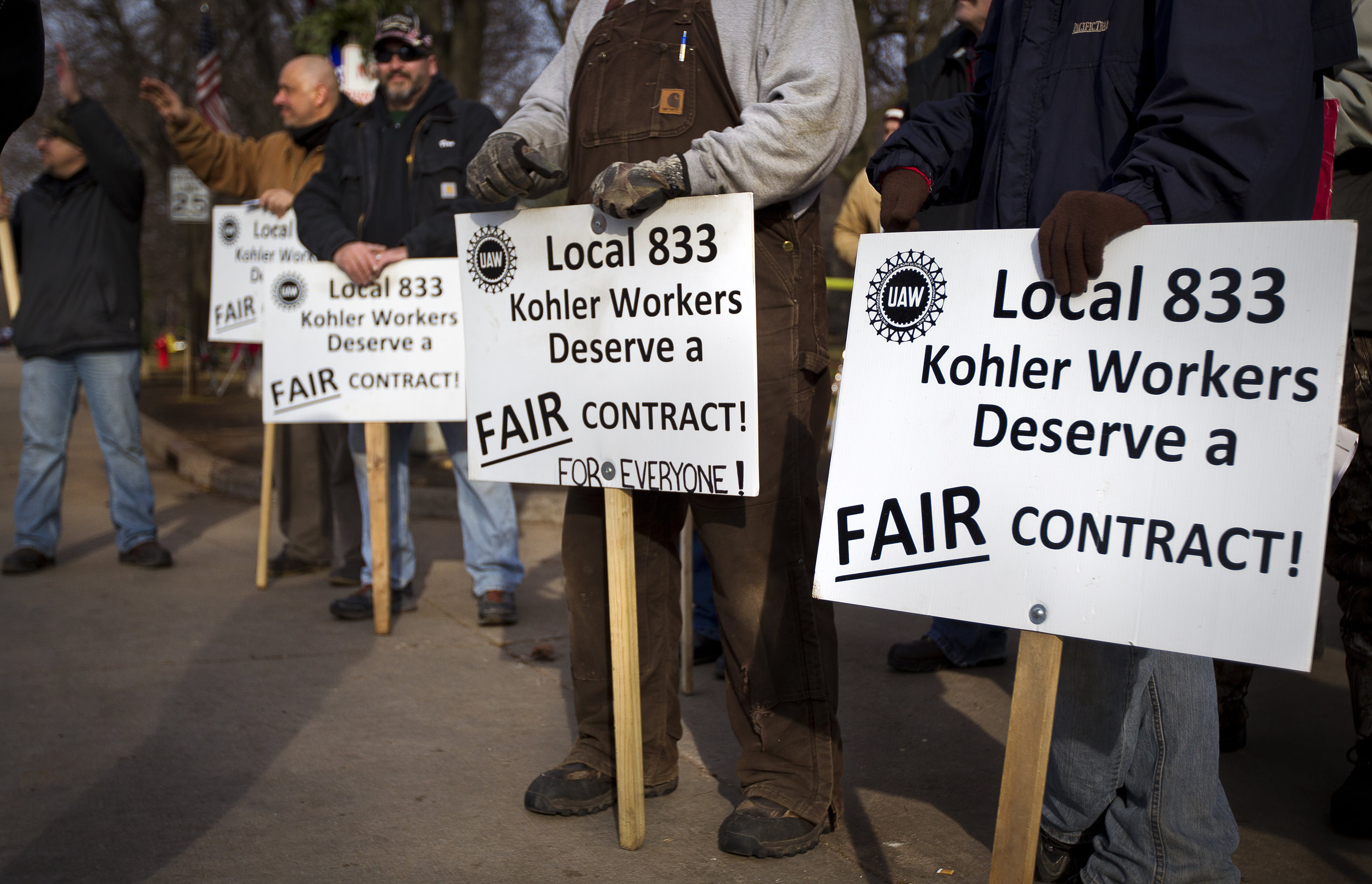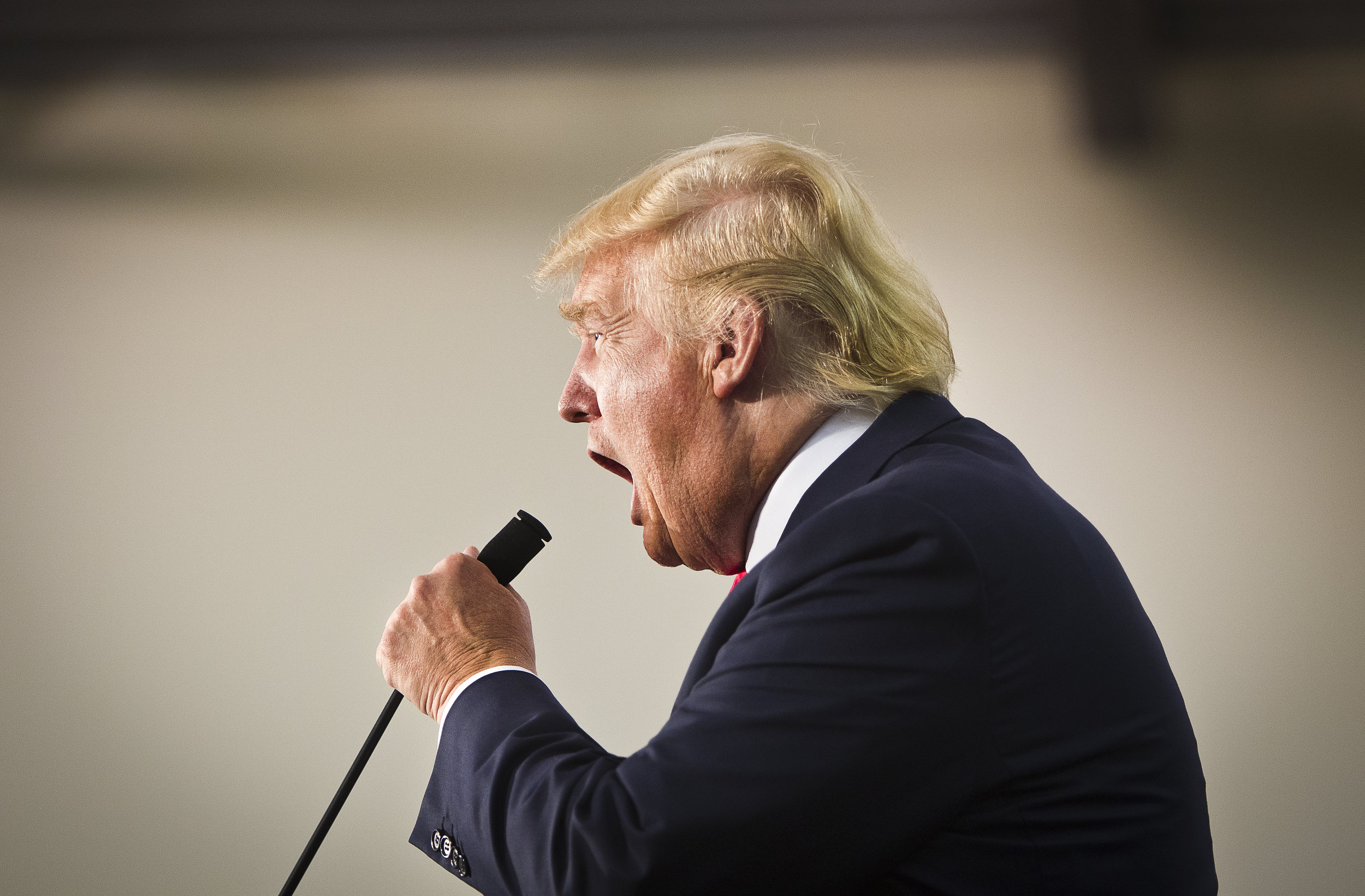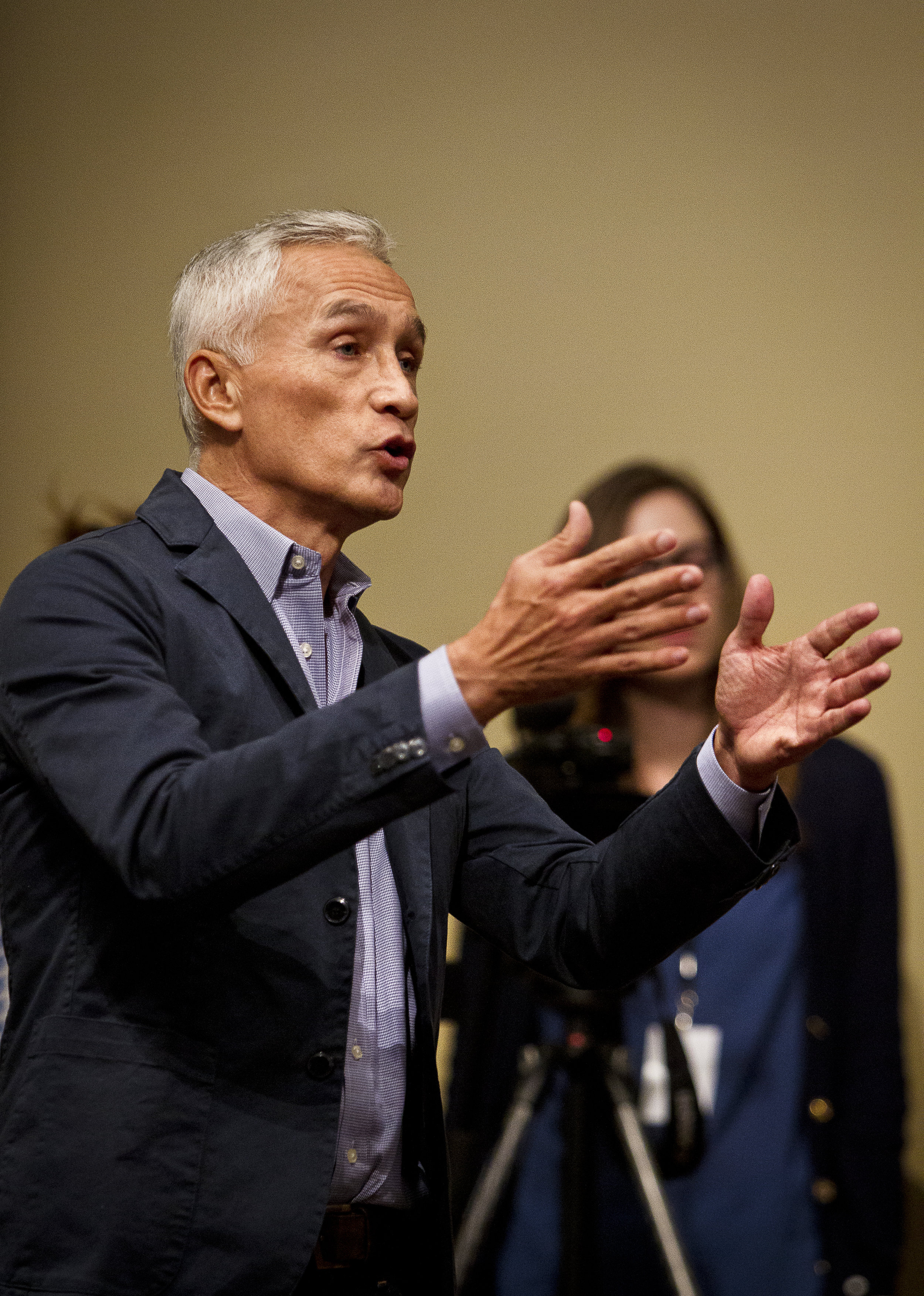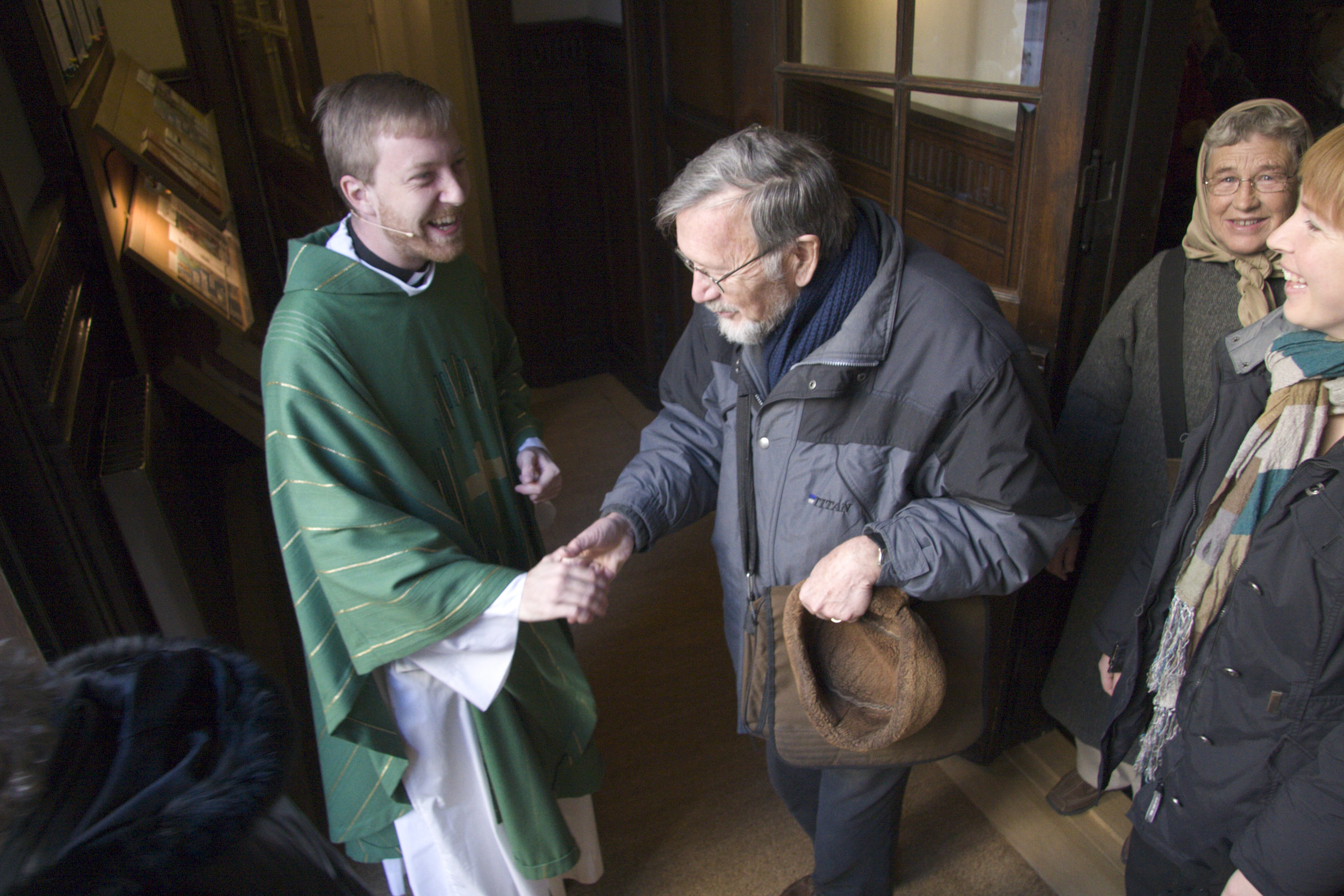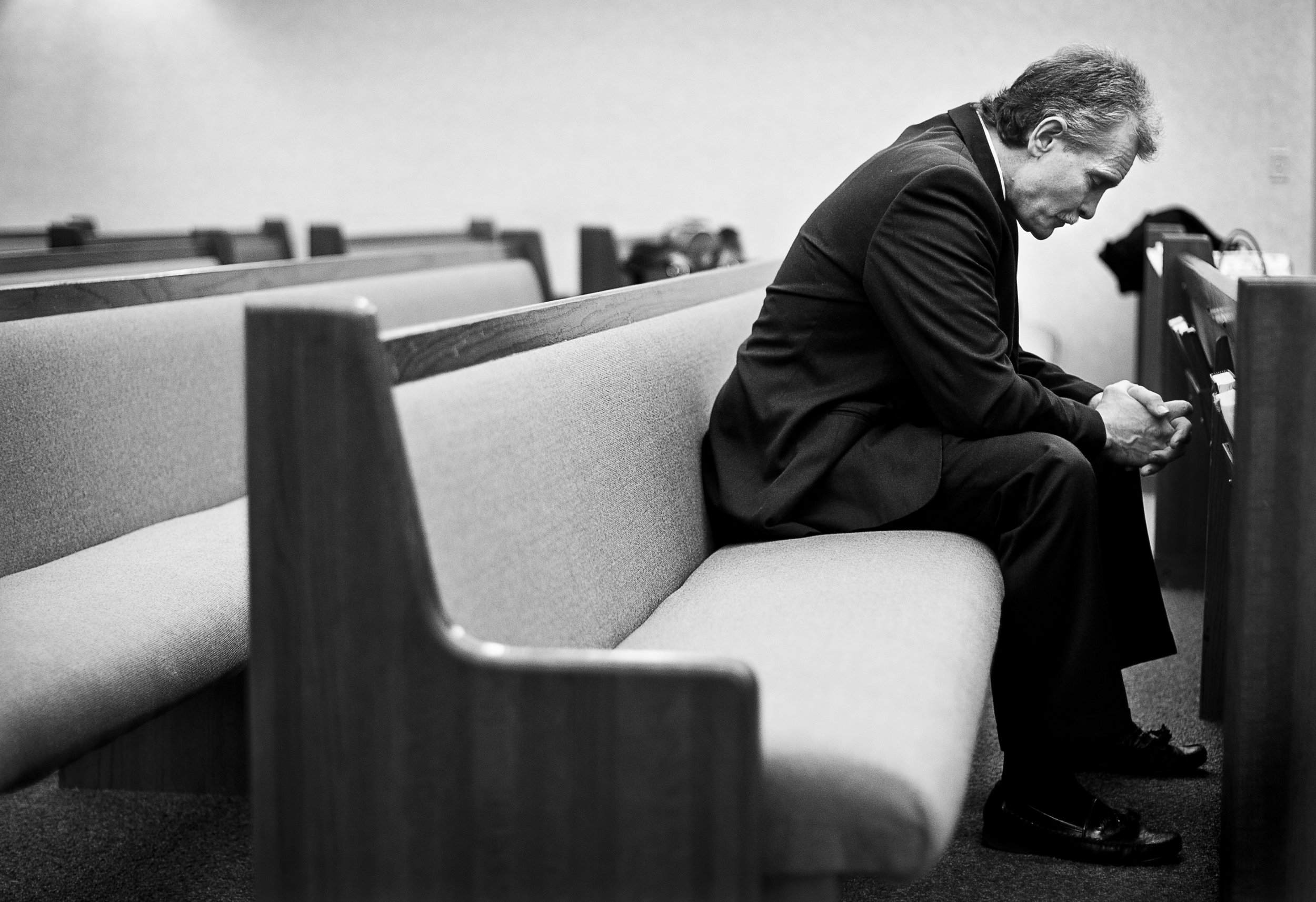Well what a crazy stretch that was. Whether you’re feeling the Bern, stuck on Cruz Control, or playing the Trump card, this batch of photos will have something for you. (Even if you’re Kasich of the whole damn political process).
Striking Developments
This past week, I was given the opportunity to work on another fascinating assignment with the New York Times and reporter Julie Bosman in covering the on-going strike between management and employees of the Kohler company outside Sheboygan, Wisconsin.
KOHLER, WI — DECEMBER 9, 2015: Jeff Radtke, a 28 year veteran in the Kohler Pottery department looks down the picket line outside the Kohler facility, Tuesday, December 8, 2015.
I was able to spend the better part of a day walking along the picket line, capturing the scene and learning more about their stories, motivations, and emotions.
Most of all, perhaps, I was struck by the particular demographic most common amongst the strikers:
28 years of work at Kohler. 36 years of work at Kohler. 42 years of work at Kohler.
These were employees that had truly dedicated their lives to the company. More interesting still is the fact that the proposed changes to the Kohler pay scale — one of the root causes for the strike— affects a proportionally small minority of these veteran employees.
KOHLER, WI — DECEMBER 9, 2015: UAW Local 833 employees strike outside the Kohler manufacturing facility, Tuesday, December 8, 2015. Around 2,100 Kohler employees and union members are currently maintaining a 24/7 picket line outside the plant.
Worker after worker Julie and I spoke to reiterated similar points: We’re doing this for the ones just starting out, the youngest ones at the company, the ones hit the hardest, and the ones with the least means to weather the change.
KOHLER, WI — DECEMBER 9, 2015: Dale Mand, a Kohler employee of 43 years in the Engine plant, looks on at other Local UAW 833 strikers outside the Kohler facility, Tuesday, December 8, 2015. Around 2,100 Kohler employees and union members are currently maintaining a 24/7 picket line outside the plant.
The level of camaraderie and support from one employee to another at Kohler truly was a sight to behold. Sounds like the ball is in your court, Kohler.
THE CIRCUS COMES TO TOWN
Last week I had the pleasure chance to be able to head down to Northeast Iowa to cover for Reuters the inimitable Donald Trump at his “Make America Great Again” Rally at the Grand River Center in Downtown Dubuque.
Republican Presidential candidate Donald Trump's greets the crowd during his "Make America Great Again Rally" at the Grand River Center in Dubuque, Iowa, Tuesday, August 25, 2015. REUTERS/Ben Brewer
From start to finish, it was truly an odd event, though the most notable part of the rally happened before “The Donald” ever set foot on stage.
During a brief press conference before going under the bright lights of the convention center, a few journalists began asking questions of the Republican Presidential candidate. Among those was respected Latino reporter Jorge Ramos, who began to press Mr. Trump on specifics of his immigration reform strategy.
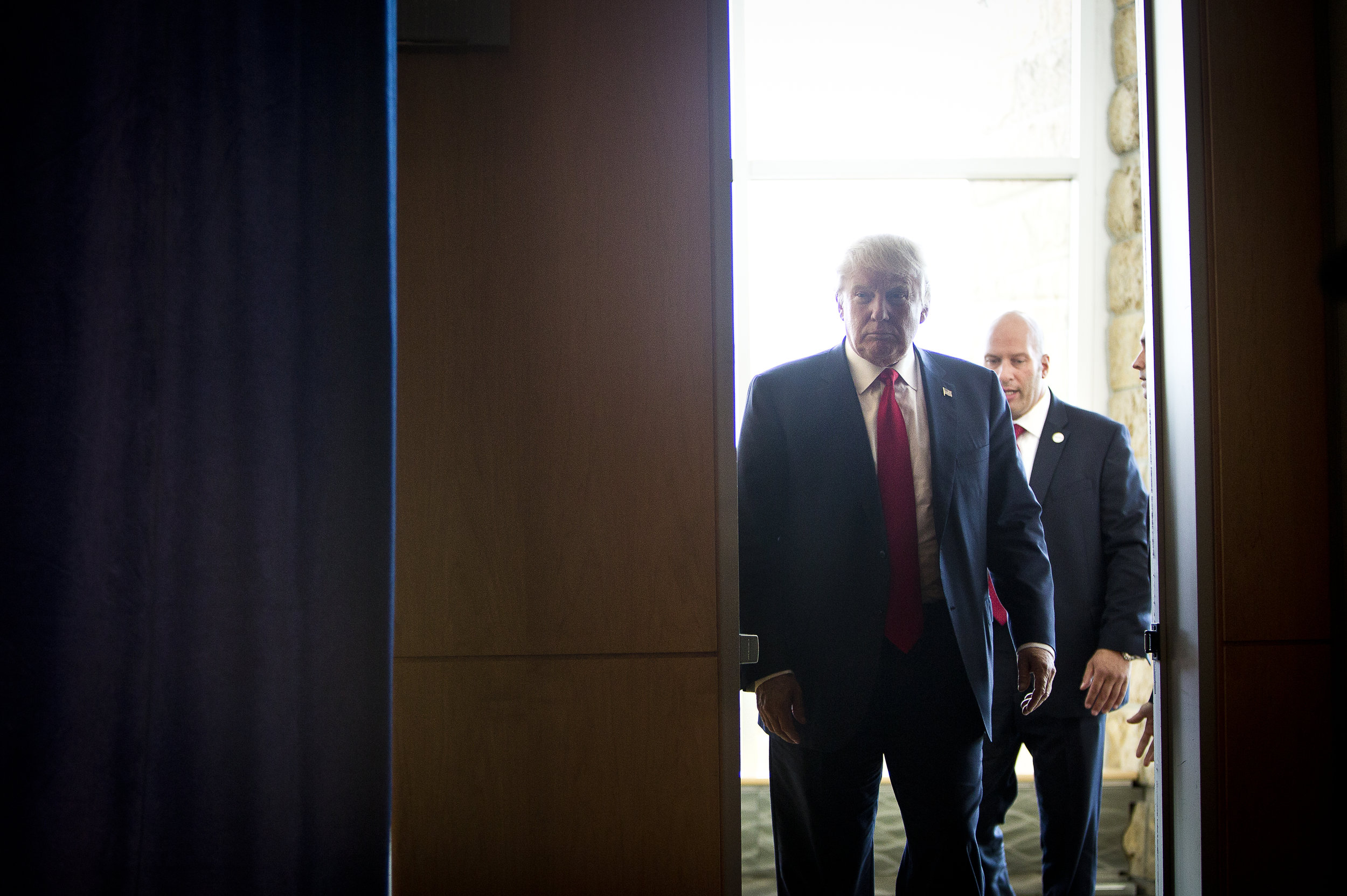
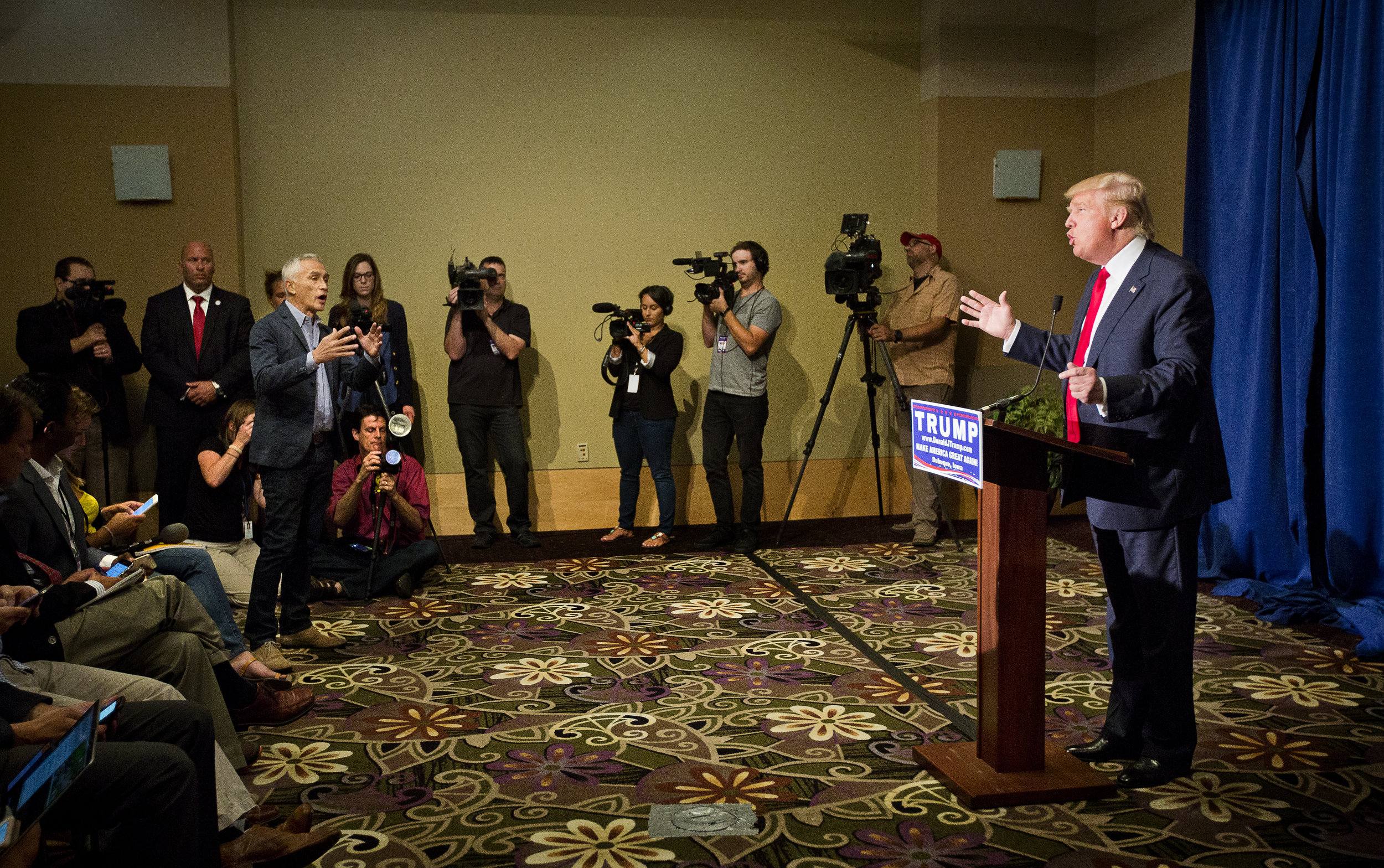
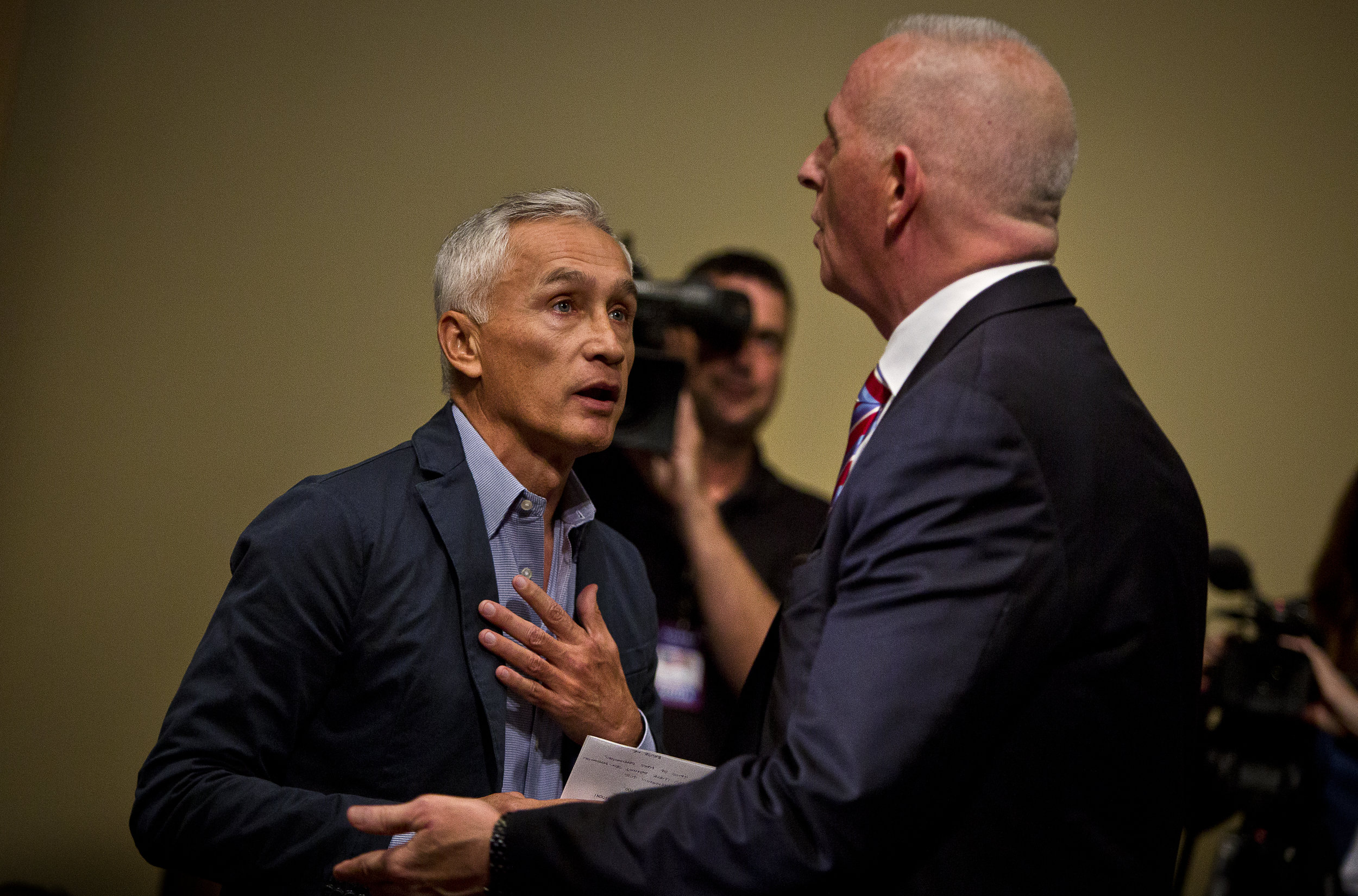
In what I can only describe as the strangest presser I’ve been to before, Ramos was then escorted from the conference as Trump told him repeatedly to “Sit down, sit down” culminating in a belittling “Go back to Univision” as the doors of the press room shut.
Wow. Before I get into the realm of politics and what I think of Mr. Trump’s opinions and policy ideas … did he just kick a reporter out and essentially tell him to go home? Oh wait, a Trump supporter outside the presser actually did just that.
After being let back in to the conference, Ramos was “officially called on” (C’mon, really? We all know how press conferences go with every reporter trying to get the attention of the guy on the podium…) and began to spar with Trump on issues such as deportations, potential human rights abuses, and overall perception of Trump in the Latino community.
After all of those shenanigans finished up, I was able to get back to business photographing “The Donald” as he spoke to a packed house of eager supporters.
Probably most exciting about this rally was really being able to be in the right place as events unfolded and creating images that are being distributed all over the place— showing up in large publications like The Guardian, The New York Times, Newsweek, and more. Great feeling to be back in the news saddle and creating images being seen around the world. Here’s to more of this…but hopefully a little less Trump in the future.
SOMETHING IS ROTTEN IN THE STATE OF WISCONSIN
Well, what an interesting couple of weeks it’s been here in Madison…
It all kicked off after a “drafting error” showed the true intentions of Governor Scott Walker — instituting massive budget cuts of $300M to the University of Wisconsin system over the next two years. Needless to say, students, professors and community members were less than thrilled. A systematic dismantling of the UW System and “Wisconsin Idea” prompted numerous on-campus Q&A sessions and rallies in opposition to the proposed budget.
Unrest only grew this week.
Mere days after the proposed cuts were made public did more unexpected news arrive. Despite earlier claims that it would be a “distraction,” Wisconsin legislators announced their plan to make Wisconsin the 25th “right-to-work” state, another attempt to reduce the influence of unions only a few short years after Wisconsin Act 10 was passed, breaking down the rights of public sector unions and collective bargaining power.
As a fairly new resident to Wisconsin, I’m utterly struck by the complete and utter disconnect between our politicians and the people they purport to represent. Is it a fundamental issue of constituents voting against their own best interests? An uninformed electorate? A continuous cycle of politicians who promise to do one thing, then do the opposite? I honestly don’t know.
MADISON, WI — FEBRUARY 24: Employees inside the Wisconsin State Capitol show a message of support and solidarity from their window looking over the worker and labor union opposition rally just outside. Workers and labor unions rallied in opposition to a right-to-work bill being discussed in the state legislature.
And as I look across the border to my home state of Minnesota, I wonder how those running Wisconsin can honestly see our neighbor’s successes yet denounce their methods.
(And just a pro tip here, it’s likely not in your best interests to compare your constituency to a murderous and barbaric terrorist organization…)
Obviously, I’m exceptionally grateful to have this amazing chance to cover what’s happening in (what’s now) my state for the New York Times recently. I just wish I had better news and more human stories to be reporting — not a divided populace, disingenuous governing body, and a stumbling economy.
LONG TERM IN VESTMENTS
I recently had the chance to help cover another assignment for The New York Times, this time focused on the fascinating story of David Couper—the former Police Chief of Madison turned Episcopal priest in North Lake, Wisconsin. I was struck both by this sea change of lifestyle as well as his very real, pragmatic philosophy.
Cooper, a former Marine and police officer, is now a staunch advocate for improving police processes and correcting years of corruption and institutionalized racism in many police departments around the country.
NORTH LAKE, WI — JANUARY 18, 2015: Reverend David Couper, right, pats parishioner Mary Buerosse after mass at St. Peter’s Episcopal Church, Sunday, January 18, 2015.
Aside from being a incredibly interesting narrative, I enjoyed capturing the cozy, small-town church as it’s own separate character in the story.
On the hour-long drive back home from North Lake, it hit me: “Hmm, I’ve done a lot of stories about religion.”
It all started with my first real photo story back in 2009 with my first (and only) photojournalism class, studying at the Danish Institute for Study Abroad. Challenged with the (at the time, daunting) task of creating a photo story of “someone at work” over the course of a semester, I decided to turn towards a Catholic priest practicing in Copenhagen—where Catholics make up less than 1% of the population.
And now I’m proud to give a little preview of another addition to the list. During my final month in Salt Lake City while interning for the Deseret News, I sought out and photographed a personal photo story (that, unfortunately never found its way into print because of unfortunate timing):
43.3 percent. This is the average recidivism rate in the United States according to a recent Pew Center study. While there are a myriad of reasons why former inmates re-offend or violate the terms of their parole, the the more pertinent question to ask is: “What drives ex-convicts to not return to the prison system?” “ReFormed” is the story of three former inmates living in Salt Lake City, UT, who, through the strength of their spiritual convictions, escaped from the darkness of incarceration. With a Mormon population of nearly two-thirds, the state of Utah serves as a unique example of where faith and a deep spiritual connection can make all the difference—driving these three towards new lives.
You can check out the full photo story on my website under Photo Stories and in my Editorial Portfolio.




